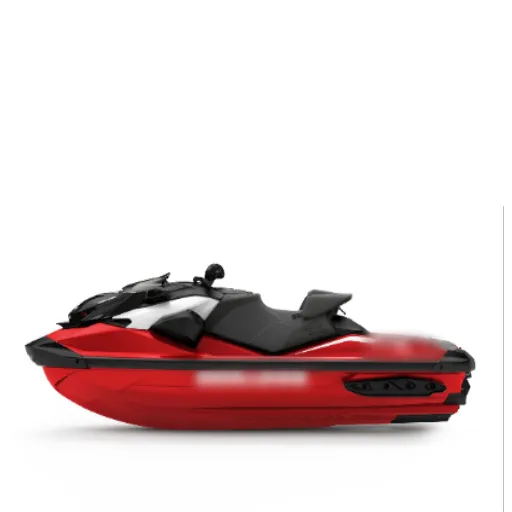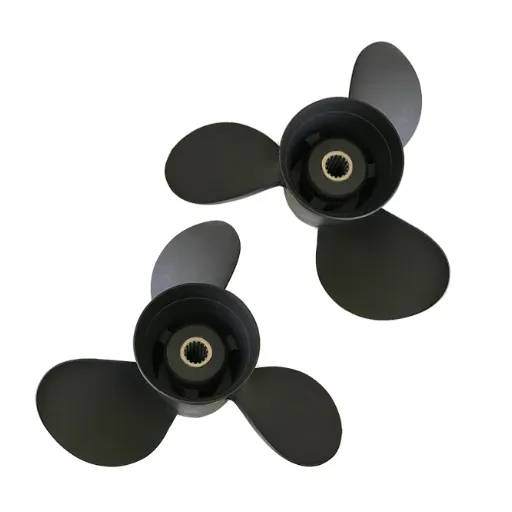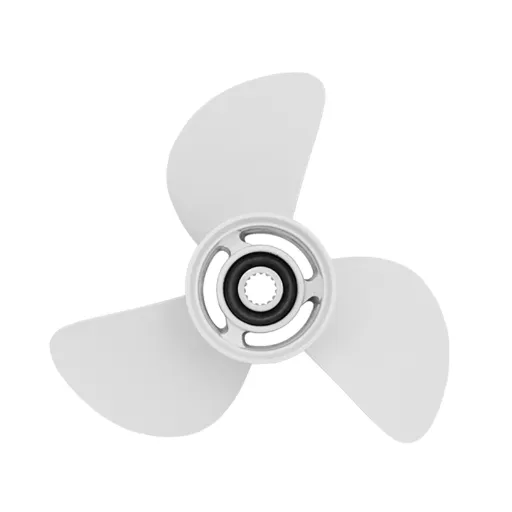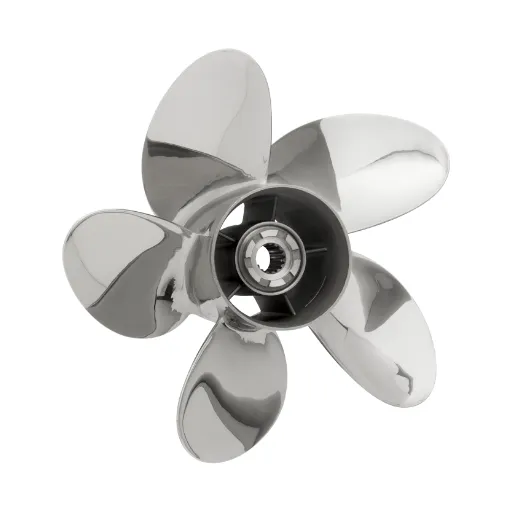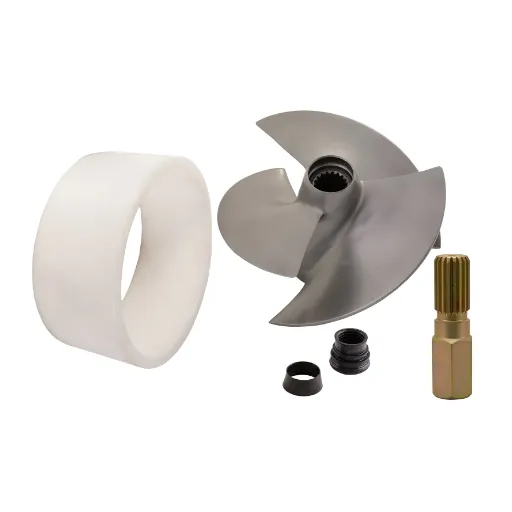Jet skiing is more than a water sport—it’s an exhilarating activity that mixes up speed, talent, and a desire for fun. Jet ski producers for 2025 have pushed the limits of performance and unveiled high-tech engineering along with fabulous speed capabilities. If you are an expert looking for your next upgrade or have a strong curiosity about the latest in the water sports world, this guide will help you see the fastest jet skis for the year. We will dwell on their speed records, hi-tech features as well as reasons why these models are the top in power and performance on the water. Prepare yourself to find out which stylish machines are going to dominate the market in 2025!
Introduction to Jet Skis

What is a Jet Ski?
Jet skis are small personal watercraft (PWC) that are mainly used for water recreation and sometimes for water utility. Jet skis have been popular with those who did not enjoy their speed and performance but still wanted to experience turning and moving about through lakes, rivers, and sometimes even the sea. The jet ski, or rather the jet-powered swimming bike, is a watercraft that is propelled by a water jet system and operated by the rider, who may be sitting or standing.
Jet ski acres are very economical and are less likely to contribute to pollution in coastal and inland waters. This means that the maximum speed and minimum travel time is like aeroplane passenger travel everyday. Due to their being motorized water bikes, the initial learning curve is pretty short (often just being more of the common sense sort) especially when it comes to intuitive control, which usually consists of one handlebar to steer backward and the other one forward for throttle, besides they do require minimal skills.
Widely questioned about their recreational purpose, jet skis have a few practical purposes as well. The fact that they can be operated with so much speed makes them ideal for lifeguards and rescuer! Moreover, there are a great variety of jet ski models available today with seating capacity, safety measures, and clean engine options all being among the major features that differ from one model to the other. No doubt, these machines are very versatile and thus have truly fingered both the fun and functioning area in water.
Importance of Speed in Watercraft
The speed of a watercraft is a decisive factor in its functionality as well as in its versatility, the pace deciding the areas of recreational use as well as practical applications. To the recreational users, speed translates into thrilling experiences, accommodating such exciting activities as jet skiing, wakeboarding, and racing. The thrill of fast-moving watercraft is really potent, and it attracts the customers in large numbers and keeps them deep in their engagement and enjoyment.
On the other hand, the speed is a great factor for the operations in which time plays a very important role, e.g., search-and-rescue missions, or police actions. Fast watercraft can transport emergency crews to different areas of the large water bodies in the least time possible thus decreasing the responding time and saving lives in some cases. For surveillance, speed guarantees quick interception and monitoring when required, which underlines its role in providing safety and security on the water.
Moreover, in watercraft racing and other similar activities, speed is the lonesome factor that decides the margin of victory or loss. Innovations in design and engine performance are continuously pursued to push the limits of velocity, thus keeping the sport vibrant and interesting for both the participants and the spectators. Whatever the case may be, the significance of speed in watercraft, whether for leisure or critical missions, cannot be overstated.
Performance Metrics of the Fastest Jet Skis

Acceleration and Handling Characteristics
The maximum speed of the jetskis is significantly influenced by their acceleration and handling features which are very important for both recreational users and competitive riders. The main aspect that determines the speed is engine power, hull design and propulsion systems. The greatest jetskis, which are running by the most powerful engines, can cover the distance of 0-60 mph in less than five seconds, thus competing with the acceleration of a number of sports cars. These astonishing speeds are coupled with the water conditions handling capability of the jet ski, thus ensuring stability and control even in a large wave area.
One more thing that this powerful and splendid machine offers to riders is the handling that is another important factor which makes the difference between the expensive and the cheap jet skis. The hull designs used in the watercraft are one of the major features that allow for the easy turning of the skimmer since less backward pull and improved water flow are the result of such wonderful designs. With the help of features like adjustable trim systems, riders can make changes to their ships according to the sea and speed, thus securing both control and accuracy. The other way around, advanced braking systems like intelligent brake and reverse (iBR) technologies, ensure quick stops and tighter turns which are crucial to competitively performance and rider safety.
Thus, the combination of acceleration and handling makes today’s jet skis not only faster but also more motorists and safer to use. The balance of these two metrics gives an unmatched experience, whether it’s the racing through tight turns or the enjoying the high-speed thrills on the open water. As a result of the continuous innovation by the manufacturers, the development of jet skis with even more sophisticated technologies that push the limits of speed, control, and overall performance becomes a reality.
Understanding Average Speed and Performance Ratings
Talking about the average speed of jet skis we should look at the different factors that influence the performance first. For the recreational use, jet skis usually go about 40 to 60 mph, while the racing ones can go more than 70 mph if conditions are perfect. The rider weight, water conditions, and the exact model of the jet ski are among the most important factors in deciding these speeds. Furthermore, the environmental regulations may also have an impact on the maximum speed limitations, because sometimes manufacturers change the engine tuning in order to comply with the regional laws.
The performance ratings of the jet skis are based not only on their speed but also on their acceleration, maneuverability, and fuel efficiency. Acceleration is a main point for those who like to have a few quick bursts of speed or those who have to quickly perform sharp maneuvers during races or leisure activities. A lot of the modern jet skis have advanced technologies such as intelligent throttle control and braking systems, which give smoother and safer handling and at the same time also improve their overall performance. In competitive situations maneuverability gets very important, because sharp turns and precise handling can be the factor that makes the difference between winning and losing.
After speed and control, fuel efficiency is the third most important criterion for potential buyers who are after long-term savings and environmental benefits. The production of fuel-efficient and environment-friendly jet ski models is the trend that today’s manufacturers are following. High performance without excessive fuel consumption is what they are offering with their innovative engine designs. Hybrid and electric models, which are still in their development stages for widespread adoption, are seen as the future of energy use in jet skiing since they are not going to compromise on the fun factor associated with the sport. By weighing all these factors together, the consumer will be able to understand the connection between average speed and performance ratings better and thus make an informed purchase that will be specifically tailored to his or her needs.
Key Features of Fastest Jet Skis
Engine Types and Their Impact on Speed
The type of engine is one of the most decisive characteristics that directly affect the speed of a jet ski and its overall performance. You don’t find two-stroke and four-stroke engines only in the modern-day jet skis, as the two-stroke engines are smaller and lighter but, on the contrary, they deliver more immediate power bursts and, finally, they are less fuel-efficient and have higher emissions. Conversely, four-stroke engines are seen as more fuel-efficient, environmentally friendly, and providing smoother riding and these qualities make them a choice of motor sport hobbyists who want both speed and sustainability.
Boosted or supercharged engines are also significant for both maximum speed and acceleration. These modern devices compress the air that goes into the engine, thus allowing the engine to produce more power without really enlarging its size. Turbojet or supercharged jet skis find it easier to reach maximum speed at higher altitude where the air is thin. The direct-drive jet pump, which is usually the propulsion system, causes no drag at all, thus boosting performance even more.
Advancements in engine technologies keep manufacturers going, to come up with new models targeted to power-hungry consumers and professionals. Among the features, there is surely also electronic fuel injection (EFI) that delivers the fuel in the most efficient way to the engine, and thus both the speed and the efficiency of the jet ski are improved. In general, knowing the distinctions of the engine types gives the buyers the power to choose the right jet ski that is a perfect mixture of quick acceleration, high speed and durability according to their needs.
Hull Design: Influencing Speed and Stability
The hull design of a jet ski is very important in deciding the speed, maneuverability, and stability of the watercraft. Huls are mainly available in two shapes namely V-shaped and flat bottomed. The V-shaped hulls are made to glide through the roughest water and cuts water very nicely. They provide excellent stability when the boat is moving fast and enhance the rider’s control during difficult conditions. Meanwhile, flat-bottomed hulls are best suited for smooth water, as they are the fastest and most agile when it comes to making sharp turns. The choice of hull design is often made according to the rider’s preferred location and activity in water since it has a direct impact on the performance traits of the jet ski.
One more factor concerning hull construction materials that significantly affects the performance of the jet ski. Today’s hulls in most cases use lightweight and strong materisls like fiberglass and/or advanced composite materials. The use of these materials reduces the weight of overall jet ski which contributes to its better acceleration and speed, at the same time, they are also non-resilient, that is, they do not get damaged by saltwater or hitting floating objects, so they last longer. Research breakthrough in materials science allows the company’s producing jet ski hulls with more toughness but not at the cost of performance giving the craft a longer lifespan.
Moreover, constantly changing hull hydrodynamics is a process that leads to jet skiing performance being redefined to a high extent. The latest designs include features like stepped hulls and chine enhancements that minimize resistance and make the jet ski fly. This allows the rider to properly tune the craft for racing, jumping or smooth riding at their own pace. It would not be an exaggeration to say that competing with each other on the basis of quality materials and innovative engineering is what keeps the manufacturers in the race of jet ski hulls coming to the winner of water sports more thrilling and fun times during the ride, every time.
Fuel Efficiency: Balancing Speed and Consumption
Fuel efficiency has become an important consideration in the design and operation of modern jet skis, as suppliers seek to attain the combination of high performance and environmental friendliness. The right mix of speed and fuel consumption means the use of advanced engine technologies and innovative design strategies. More and more manufacturers are incorporating four-stroke engines that have better efficiency and lower emissions than the two-stroke engines. Such engines not only combust fuel less mildly but also give out the quieter and smoother rides.
The main innovation that enhances fuel efficiency is the use of lightweight materials and aerodynamic hulls. When the overall weight and drag are reduced, the energy-to-speed ratio can be improved, and consequently, greater mileage can be obtained per gallon. On top of that, electronic fuel injection (EFI) systems have been adopted by many manufacturers as a standard feature and thus, precise fuel delivery to the engine is achieved. Not only does this technology minimize waste but also it maximizes performance enabling riders to take longer trips without having to refuel constantly.
Moreover, some manufacturers are offering green solutions like hybrid engines or models with idle-reduction systems to cut down the impact of pollution caused by jet skiing. These technological innovations are in line with the trend of asking for sustainable recreation equipment that is not sacrificial regarding excitement and performance. Jet ski industry is still actively changing by concentrating on fuel efficiency along with speed, thus satisfying both the consumers’ and the nature’s demands.
Conclusion: The Future of Fast Jet Skis

Emerging Technologies in Personal Watercraft
The future of personal watercraft is being dictated by the rapid advancements in technology, which are mainly aimed at performance, safety, and sustainability improvements. One major direction is the use of electric propulsion systems, which provide a cleaner and quieter option compared to the traditional gas-powered engines. The manufacturers are now pouring money into battery technology that is both high-capacity and fast-charging so that they can give the users longer rides without compromising speed or power. Moreover, the use of advanced materials such as lightweight composites is accepted by the manufacturers in order to increase the strength of the product and at the same time reduce the weight that is going to affect fuel efficiency and maneuverability positively.
In addition, the next big thing in personal watercrafts will be the smart systems being implemented. The features like GPS navigation, collision avoidance, and performance monitoring in real-time are gradually replacing the earlier technologies in personal watercraft thus increasing the control and awareness of the rider. Moreover, the technology in connectivity has come to such a point that smartphone apps can be used for integration with the PWC allowing one to do things like ride tracking, settings adjustment, and even having remote diagnostic services.
This technology has also made sustainability a priority and hence the manufacturers are looking for greener materials and come up with renewable energy technologies. The ideas of solar-powered watercrafts and hybrid propulsion systems are being worked on so that the manufacturers will not only be able to protect the environment but also comply with the strict regulations that are posed on them. These techs are the ones symbolizing the future of personal watercraft as they enable the use of cutting-edge technologies to create a safer, greener, and more enjoyable riding experience.
Trends in Jet Ski Performance and Design
The performance and design of jet skis have been taking huge leaps thanks to continual engineering advancements and consumer demands for better experiences. Industry innovators are developing new models of jet skis that are fitted with high-powered engines that consume less fuel at the same time. An example of a coolant system is the closed-loop cooling systems, which enhances performance as well as environmental protection by cutting down on water pollution. In addition to that, jet ski manufacturers are looking into the use of light but strong composite materials for the making of the hull and the frame of the ski, thereby giving it more agility and durability without losing structural strength.
Another area in which design is going hand in hand with engineering is that of rider comfort and ergonomic features. The jetskis with adjustable handlebars, newly designed seating for two or more riders, and properly arranged storing areas are not only versatile but also friendly to users. The latest technology onboard like GPS, cruise control, and ride modes suited to one’s style are now becoming a part of the equipment and are meant for both leisurely and professional users. The incorporation of smart systems is continuing, as a few models already include apps for tracking performance, getting maintenance alerts, and safety features based on the location.
Trends in the industry are also indicating that there is a growing focus on electric and hybrid-powered watercrafts for the sake of the environment. The producers attentively plan the alternatives to be quieter and emission-free, yet the vibrant performance will still be demanded by the fans. The shift towards such innovations makes it possible for jet skis to coexist in the future where environmental issues and cutting-edge technology come together seamlessly, thus maintaining their attractiveness for many more years to come.
Case Studies and Data Analysis

Performance Metrics of the Latest Models
The latest electric and hybrid watercraft have already shown performance metrics that are amazing, and they are even able to compete with their gas-powered brothers. For example, a lot of the current models have their maximum speeds over 50 mph, with some luxury designs nearly hitting 60 mph, all this made possible through the utilization of very strong electric motors that output a lot of torque. Besides that, these units often boast acceleration that is at par with gasoline counterparts, going 0-30 mph in less than 5 seconds thanks to continuous advancements in the areas of lightweight materials and battery technology.
Speed is first but runtime is the second most important factor when it comes to the comparison of these technologies. The new electric jet ski models come with the lithium-ion batteries that are capable of two hours of working time per charging under ideal conditions, almost instantaneous charging that greatly cuts downtime is also part of the package. Hybrid models are even more efficient in this regard since they add small ICEs as range extenders, which gives up to 4 hours of total runtime when combined without compromising the environment-friendly design.
Moreover, the durability and maintenance of the equipment have been improved through modular design coupled with better corrosion-resistant materials and thus the equipment life in harsh conditions has been extended. Such performance numbers are indications of the industry’s transition towards ecological yet still powerful watercrafts that will satisfy both hobbyists and professionals.
Impact of New Technologies on Speed
The adoption of modern technologies has played a major role in the fast and high-performing personal watercraft of the future. This is not only about speed but also about safety and efficiency. The following are the five most important technologies that have helped the development of personal watercraft:
1. Hydrodynamic Hull Designs
New hull designs apply modern hydrodynamics to draw less and boost speed of watercraft up to 15%. These hulls make the rides quicker and smoother even in bad water conditions. The testing of these hull designs has shown speed improvements of up to 15% as against traditional designs.
2. High-Efficiency Electric Propulsion Systems
Electric propulsion systems with the most efficient energy output do the best in terms of acceleration and speed. The most daring of them can reach speeds beyond 50 mph while using an extra small amount of energy, hence, being eco-friendly.
3. Lightweight Composite Materials
Watercraft constructed with materials like carbon fiber and graphene have their weight cut down thus giving the impression of being brittle. The weight saving also implies that the watercraft can be faster in their various operations.
4. Smart Control Systems
New onboard control systems continuously monitor engine performance and change conditions to give the best speed and fuel economy. Tests done in the field claim a 20% increase in average speed across different conditions.
5. Turbocharged Engines with Fuel Efficiency Enhancements
Turbocharged engines supplied by cutting-edge fuel injection systems produce power never seen before while at the same time controlling fuel consumption. These engines are capable of producing higher speeds with up to 30% more efficiency than the old combustion engines.
Collectively, these technological advancements showcase the potential of innovation in transforming the performance standards of personal watercraft.
Market Trends for Personal Watercraft in 2025
The most important thing to keep in mind when looking at the market trends for personal watercraft in 2025 is the fact that sustainability and advanced technology will be the key drivers of the industry. The planet-friendly innovations are the one that will be in the lead with the manufacturers who are mainly focused on electric and hybrid models as the way to comply with strict environmental regulations. Besides, the consumers are more and more turning to the watercraft that offer power and performance but also are sustainable at the same time. This is a clear indication of the global shift towards ‘green’ alternatives that cuts across all sectors.
Moreover, the smart technology is badly needed in the future watersports. The days when integrated GPS systems, smartphone connectivity, and AI-powered navigation were the prerogative of the few are long gone. Parallel to these developments, user experience will be the focus of the industry through convenience and safety, hence catering to the tech-savvy consumers who expect products to be connected and intuitive. Companies that give priority to these smart features will be able to not only ride the wave of increasing demand but also position themselves to grab a large part of the market.
In my opinion, the technological transformation that is taking place in the personal watercraft market is very fascinating and the industry will be looking forward to an exciting time of growth. High performance, eco-friendliness, and cutting-edge technology have become the industry’s mantra, and the consumers’ preferences and regulations shifts have gone hand in hand with it. If the industry keeps the innovation wheel turning in these areas, not only can the consumer base be increased but the new sustainability and functionality standards would be set as well.
References
- •
Jet Skiing: This document provides insights into jet skiing, including speed and performance aspects, making it a useful reference for understanding jet ski dynamics. - •
Innovating the Electric Jet Ski: This research discusses innovations in jet ski technology, including speed and performance challenges, with a focus on electric models. - •
Electric Powered Jet Ski: This paper examines the technical aspects of jet ski speedometers and their accuracy, which is relevant for understanding speed performance. - •
Click here to read more.
Frequently Asked Questions (FAQ)
Q: Which is the fastest jet ski available on the market?
A: The most speediest jet ski that is presently being sold to customers has been acknowledged as the one which can gain over 70 mph, particularly the Kawasaki Jet Ski Ultra and Yamaha GP1800R SVHO. These fast PWCs have got very high performing engines, with the Ultra engine reaching up to 310 horsepower, thus making them perfect for the water-loving ones that enjoy speed and performance.
Q: What can be the maximum speed of stock jet ski?
A: The maximum speed a stock jet ski can achieve varies as per the model and manufacturer with usual maximum speed of 40 to 55 mph. Sea-Doo RXP-X 325 is a performance maximized design jet ski, whereas entry-level models would exhibit diminutive speed capabilities. Replacement parts can be installed for those wanting more thrill that will contribute significantly towards heightened speeds.
Q: Which factors determine the speed of a jet ski?
A: The horsepower of the engine, the weight of the craft, water conditions, and rider experience are some of the factors that determine the speed of the jet ski. The contestants do not mind the price since the models of the Yamaha FX Cruiser and Kawasaki Jet Ski Ultra are high performance and their technology is state of the art which gives them the ability to stay up and also go fast.
Q: Do some jet ski brands stand out among others in terms of speed?
A: For sure, slow brands like Kawasaki, Yamaha, and Sea-Doo are acknowledged as makers of a fast jet ski. The phrase “speed and performance” fits pretty well to the Kawasaki Jet Ski Ultra series and Yamaha Waverunners, especially to the GP1800R SVHO which leads the market in terms of both speed and comfort.
Q: How much power does the fastest jet ski get?
A: Generally, the fastest jet skis are equipped with engines of 310 horsepower, such as Kawasaki Ultra 310LX and Yamaha GP1800R SVHO giving it the capability of rapid speeds and thus making it a favorite in the context of racing and also leisure activities.
Q: How can I select a jet ski depending on whether I want it for cruising or racing?
A: Deciding on a cruiser and a racing jet ski, it is very necessary to consider the purposes of your purchase. The Yamaha VX Cruiser is an example of a jet ski designed for comfort and stability while cruising with slow speeds, while, the Sea-Doo RXP-X is a performance jet ski made for quickness and dexterity. Additionally, evaluate power, weight, and features such as the Super Vortex High Output engine to identify the best match for your requirements.
Q: What is the main difference between a 2-stroke and a 4-stroke jet ski?
A: The core disparity comes down to the engine performance and design. Of the 4-stroke jet skis, the Yamaha FX models are more commonly used as they are the most fuel-efficient and also generate the best torque and smoothness. On the other hand, the 2-stroke models are characterized by a swift acceleration and their light weight, thus they are more often used in races. Owing to stricter emission regulations, the 4-stroke models are now the majority.
Q: Why one should go for high-performance jet skis?
A: High-performance jet skis are all about speed and agility featuring advanced technologies like nanoxcel2 hulls that improve stability and cut down weight. High-horsepower models like the Kawasaki Jet Ski Ultra series are so powerful that they give an exhilarating feeling of speedy climbing up to the maximum peak, which is an ideal case for experienced riders desiring to have thrilling moments and adventures on the water.




